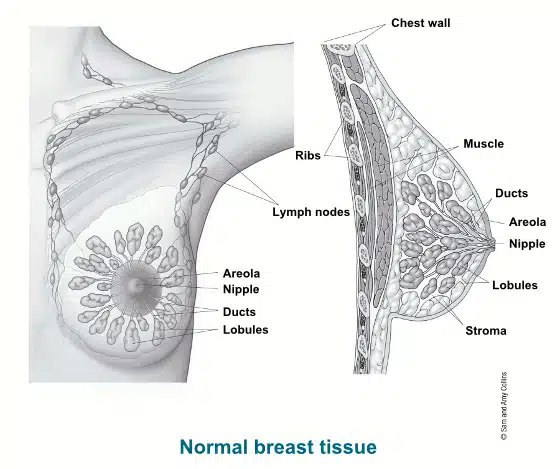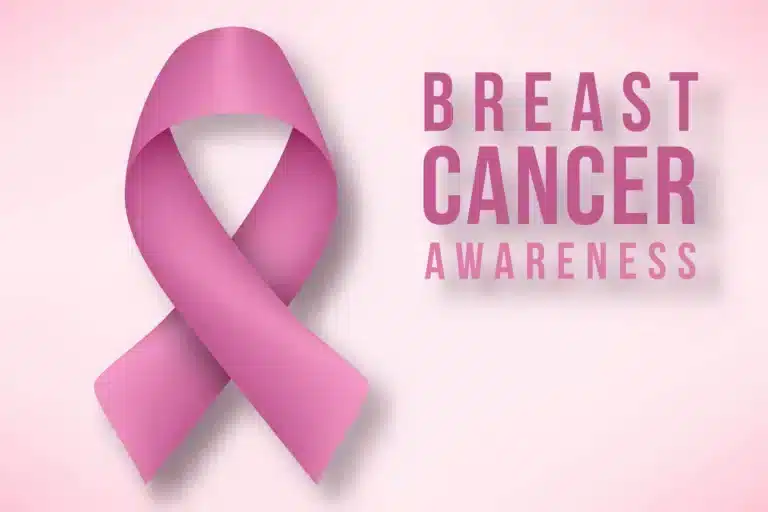Breast cancer is a topic that many of us have heard about, but it can still feel overwhelming and even a little scary. Let’s break it down into simple, easy-to-understand information. Whether you’re here to educate yourself, support a loved one, or learn how to lower your own risk, this guide covers everything—from what breast cancer is to how it’s treated, and answers to frequently asked questions.
What Is Breast Cancer?

Breast cancer happens when the cells in the breast start growing abnormally. Instead of following the usual cycle of growing, dividing, and dying, these cells grow out of control and form a lump or tumor.
Some breast tumors are benign (non-cancerous) and don’t spread to other areas. Others are malignant, meaning they can invade nearby tissues and even spread to other parts of the body (a process called metastasis).
Types of Breast Cancer
Breast cancer isn’t a one-size-fits-all diagnosis. There are several types, categorized based on where the cancer starts and its specific characteristics:
- Ductal Carcinoma In Situ (DCIS)
- Non-invasive cancer confined to the milk ducts.
- Hasn’t spread to surrounding tissue.
- Invasive Ductal Carcinoma (IDC)
- The most common type.
- Starts in the milk ducts but spreads to nearby tissue.
- Invasive Lobular Carcinoma (ILC)
- Begins in the milk-producing glands (lobules).
- Can spread to other parts of the breast or body.
- Triple-Negative Breast Cancer (TNBC)
- Lacks receptors for estrogen, progesterone, and HER2 protein.
- Aggressive and harder to treat.
- Inflammatory Breast Cancer (IBC)
- Rare and aggressive.
- Makes the breast look red and swollen, resembling an infection.
- Paget’s Disease of the Breast
- Affects the skin of the nipple and areola.
- May cause flaking, redness, or discharge.
What Causes Breast Cancer?
While the exact cause isn’t always clear, several factors can increase your risk:
- Age: Risk goes up as you get older, especially after age 50.
- Gender: Women are far more likely to develop breast cancer, but men can get it too.
- Genetics: Mutations in genes like BRCA1 and BRCA2 can increase risk.
- Family History: Having a close relative with breast cancer increases your likelihood.
- Hormone Levels: Prolonged exposure to estrogen (early menstruation or late menopause) can play a role.
- Lifestyle Factors: Obesity, alcohol consumption, and lack of exercise are all linked to higher risk.
Symptoms of Breast Cancer
Not all breast cancers show symptoms, especially in the early stages. However, common signs include:
- A lump in the breast or underarm.
- Changes in the size, shape, or appearance of the breast.
- Skin dimpling or puckering (like an orange peel).
- Nipple discharge (clear, bloody, or milky).
- Redness, swelling, or warmth in the breast.
- Pain in the breast or nipple that doesn’t go away.
If you notice any of these symptoms, don’t panic. Many breast changes are not cancer, but it’s essential to see a doctor to rule it out.
How Is Breast Cancer Diagnosed?
When something suspicious is found, healthcare providers may recommend several tests:
- Mammogram:
- A special X-ray of the breast to detect tumors or abnormalities.
- Ultrasound:
- Uses sound waves to create images of breast tissue.
- Biopsy:
- Removes a small sample of breast tissue for lab testing to confirm if it’s cancerous.
- MRI (Magnetic Resonance Imaging):
- Provides detailed images to detect the extent of cancer.
- Genetic Tests:
- Checks for inherited mutations like BRCA1 or BRCA2.
Stages of Breast Cancer
Doctors use staging to determine how advanced the cancer is and to create a treatment plan:
| Stage | Description |
|---|---|
| 0 | Non-invasive (DCIS); hasn’t spread beyond milk ducts. |
| I | Small tumor; may have reached nearby lymph nodes. |
| II | Larger tumor; more lymph nodes involved. |
| III | Locally advanced; spread to surrounding tissues. |
| IV | Metastatic; cancer has spread to other organs. |
Treatment Options
Breast cancer treatment depends on the type, stage, and individual preferences. Common treatments include:
- Surgery:
- Lumpectomy: Removes the tumor but saves most of the breast.
- Mastectomy: Removes the entire breast.
- Radiation Therapy:
- Targets and kills cancer cells left behind after surgery.
- Chemotherapy:
- Uses drugs to kill cancer cells or stop them from growing.
- Hormone Therapy:
- Blocks hormones like estrogen and progesterone that fuel cancer growth.
- Targeted Therapy:
- Focuses on specific proteins or genes in cancer cells, such as HER2.
- Immunotherapy:
- Helps the immune system recognize and attack cancer cells.
Side Effects of Treatment
Treatments can be life-saving but may come with side effects. These can include:
- Fatigue
- Hair loss
- Nausea and vomiting
- Skin irritation (from radiation)
- Changes in appetite or weight
- Menopausal symptoms (from hormone therapy)
Discuss potential side effects with your doctor, who can offer strategies to manage them.
Can Breast Cancer Be Prevented?
There’s no guaranteed way to prevent breast cancer, but you can lower your risk with these tips:
- Maintain a healthy weight.
- Exercise regularly (at least 30 minutes most days).
- Limit alcohol to one drink per day or avoid it altogether.
- Eat a balanced diet rich in fruits, vegetables, and lean proteins.
- Avoid smoking.
- Consider genetic testing if you have a strong family history.
- Get regular mammograms and perform self-exams.
FAQ
Q: Can men get breast cancer?
Yes, though it’s rare. Men account for about 1% of all breast cancer cases.
Q: What’s the survival rate for breast cancer?
Survival rates vary by stage. For localized breast cancer (Stage 0 or I), the five-year survival rate is around 99%. For metastatic cancer (Stage IV), it’s about 30%.
Q: How often should I get screened?
For average-risk women, mammograms are generally recommended every two years starting at age 40. Women at higher risk may need earlier and more frequent screening.
Q: Does having dense breasts increase cancer risk?
Yes, dense breast tissue makes it harder to spot cancer on mammograms and slightly raises your risk.
Q: What’s triple-negative breast cancer?
It’s a type of breast cancer that doesn’t have receptors for estrogen, progesterone, or HER2. It’s more aggressive and often requires chemotherapy.
Living With Breast Cancer
A breast cancer diagnosis is life-changing, but support is available:
- Join Support Groups: Connect with others who understand your journey.
- Take Care of Yourself: Eat well, rest, and stay active when possible.
- Ask for Help: Lean on family, friends, or professional counselors.
- Stay Informed: Learn about your treatment options and progress.
References
- American Cancer Society. “What Is Breast Cancer?”
- Mayo Clinic. “Breast Cancer: Overview.”
- National Cancer Institute. “Breast Cancer Treatment Options.”
- World Health Organization. “Global Breast Cancer Initiative.”
Breast cancer is serious, but early detection and advancements in treatment have saved countless lives. If you or a loved one is facing this diagnosis, know that you’re not alone. There is hope, support, and a wealth of resources to guide you through every step of the journey.


